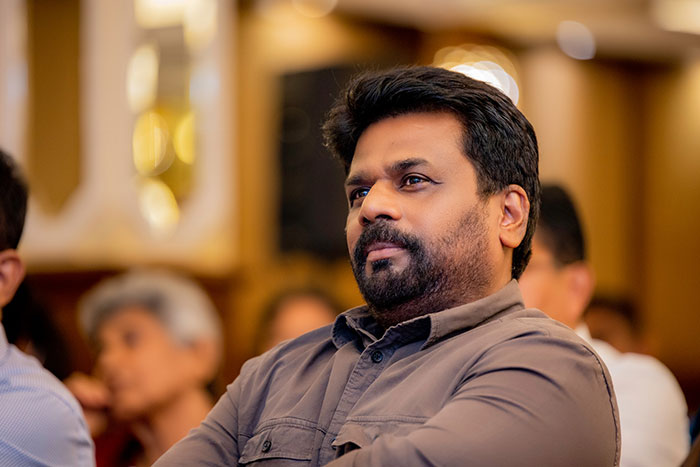KAMALIKA PIERIS
Gunaratna and Jayakody have given a full description of the massacre of samaneras at Arantalawa. Gunaratna and Jayakody have interviewed persons who were physically present at the massacre and obtained first person information. .They speak of the joyful preparations and happy start to the charikawa, and then describe the massacre, as it was recalled to them is a very detailed account [1] .
On the day of the trip, Ven. Indasara had arrived at Sri Vidyananda Pirivena in his van. There, the samanera comprising mainly 10, 11, 12, 13 and 14 year olds as well as a nine year old, were ready and waiting. They were taken to the Mahawapi vihara. They were beyond excited about the next day’s trip, Wasantha, then 11-year-old Ven. Wawinne Sirinanda, recalled that many of them were too excited about the trip to sleep that night
On June 02, 1987 around 5:00am, a SLTB bus arrived, at the temple, carrying a board saying ‘Visesa Charika’. It was driven by G. G. Samarapala. He was a bus driver by profession and a dayakaya of the temple. N. P. Jinadasa was the conductor. Vasantha Jayawardene, a youth who lived in the area and was friendly with the young monks, had been invited to come and assist the group. 47-year-old Ratnayaka Mudalali, a trader in Ampara and a loyal dayakaya had a son, at the Pirivena, 12-year-old Ven. Devalahinda Dhammarakitha. He came on the trip to be with his son and also to help.
The monks in charge got the little ones seated inside the bus, each clutching his round talipot leaf fan in one hand and a cloth travel bag in the other, containing a spare robe, a black metal alms bowl, a needle and some thread and a parcel of food for lunch. This charikawa was a brief, delightful respite from the highly disciplined life at the Pirivena for which they had signed up at impossibly tender ages, observed Gunaratna and Jayakody.
Eventually the bus filled up, with the monks sharing seats with each other because it was so full. Ven. Andaulpotha Buddhasara had a list of all those going on the trip. He checked off the names and squeezed into a seat at the back. Behind the bus was Ven. Indasara’s white van carrying the remaining monks.
At 5:45am, the bus left the temple with 47 monks of whom 39 were samanera and four laymen. Some dayakayas from the neighborhood came to see them off. Ven. Indasara took the front seat next to a little samanera. .For the first one hour everyone in the bus was joyous and exhilarated. The little monks started to sing folk songs. After a while, Ven. Indasara with mock sternness reproached the group and instructed everyone to chant pirit with the same gusto with which they had sung the songs. Soon everyone was chanting pirit.
The bus crossed from Ampara District into Batticaloa District. Everyone was relaxed and happy. At approximately 7:15am, the bus entered a desolate stretch of road that cut through a thick teak jungle known as Aranthalawa.
Suddenly, Samarapala pressed on the brakes and the bus slowed down to a stop. A log had been placed across the road blocking the path. Samarapala consulted with Jinadasa. The conductor suggested driving over the log, but Samarapala, perhaps sensing danger, started to put the bus into reverse.
Three men appeared on the side of the road wearing navy blue uniforms similar to those worn by the Sri Lanka Air Force. One of them, a well-built tall and light-skinned” young man holding a T-56 assault rifle stepped up next to the bus and put out his hand, instructing the bus to stop.
Samarapala complied believing the man to be a member of the Security Forces, perhaps in need of a ride. The man climbed inside the bus with the two others. Pointing the machine gun at Samarapala and speaking in Tamil, he ordered the driver to turn the bus from the road into the jungle. It was now apparent to all those in the bus that the person who had entered their bus was not a member of Sri Lankan Security Forces but a member of the LTTE in disguise.
Immediately, those on the bus became frightened. Samarapala, who was proficient in Tamil, spoke respectfully, that the bus was full of innocent samanera who were headed on a pilgrimage. Please let us pass without trouble.” He begged. The LTTE cadre pointed his weapon threateningly at Samarapala’s mouth and shouted at him to turn the bus into the jungle immediately. This shows that LTTE knew about the charika, the route it was going to take and when to expect the bus to enter Batticaloa.
Samarapala turned the bus away from the open road and towards a secret place that had been prepared deep inside the jungles of Aranthalawa. With the weapon pointed at him Samarapala drove further and further into the jungle and away from the road. 25 to 30 LTTE cadres holding machine guns, swords, machetes, knives and poles had now positioned themselves on either side of the bus and behind it and were following along silently on foot. They were dressed in civilian clothes. Some seemed to be teenagers. The bus continued to move forward extremely slowly. The samanera inside the bus began to cry.
About 50 meters in, LTTE ordered the bus stopped. Another LTTE cadre boarded the bus as the one who had pointed the gun at Samarapala stepped off. He looked about 17 years old. Munny munny woch woch” he shouted holding out a bag. He moved through the bus, grabbing the wrist watches and wallets off of the lay folk. The monks also gave the money that they had on them, which was not much. With the loot secured in the bag, he stepped off the bus.
The first LTTE cadre returned and pointed his machine gun at Samarapala. Samarapala begged and pleaded, saying over and over again that he was the father of six children who would be left destitute were he to be killed. The LTTE cadre shot him multiple times in the head and Samarapala collapsed on to the steering wheel.
Another LTTE cadre climbed in. he was carrying a sword. He was well-built, dark-skinned, and had a terrifying face and demeanor”. When the samanera saw him, they began to cry even louder. “Vettada!” (Cut them!”) The LTTE cadre shouted in Tamil.
Ven Indasara stood up from his seat and said I am Hegoda Indasara from Galle. Kill me, but, do not harm these little ones.”One of the cadres shouted at Ven Indasara and pushed him back into the seat as the other swung the sword. The sword first hit the ceiling of the bus. , Ven. Indasara attempted to block the falling blade with his arm, but it struck his head. The LTTE cadre then struck him again and again like felling a banana tree” and everyone on the bus watched in horror as blood spewed out of his neck. Their beloved Head priest Ven. Indasara, 59 years, crumpled into the seat and died.
Ven. Valallawita Wimalanyana, who was seated directly behind, sensed that he would be next. He was Ven Indasaras’ deputy on this trip. He stood up and repelled the blade of the sword with his arm causing it to hit the roof of the bus. This blunted the force with which the sword came back down and saved his life. Ven. Valallawita Wimalanyana slid to the ground as the blade sliced his hand, arm and chest in one deep long gash. He fell between seats.
The samanera began to scream. Some started to run here and there inside the bus. Some hid between seats. 11-year-old Ven. Wawinne Sirinanda who was seated in the third row ducked under his seat. From this vantage point, Sirinanda could see what happened next.
An LTTE cadre grabbed a samanera who had been seated in front, and attempted to drag him outside. The little monk clung to the metal pole near the entrance of the bus and screamed and struggled. Realizing the difficulty of taking the victims off the bus one by one to be executed, an LTTE cadre struck the little monk’s head with a machete with great force splitting open part of his skull like a coconut.”
The other LTTE cadre then shot into the bus, killing Jinadasa and Jayawardene instantly. Rathnayaka Mudalali was shot in the legs as he ran further into the bus. He fell down in the aisle and passed out. With all the adults around them dead or incapacitated, some of the little monks started to call out to their mothers and fathers.
Ven. Sirinanda was under the seat. He did not know whether to cry, scream for help or be silent as the massacre went on in front of him. The LTTE cadre standing next to the seat he was hiding under reloaded his gun and around 25 bullets fell on the metal floorboard next to where he was hiding. The bullets hitting the floor made a deafening noise. He thought he would be discovered and killed when the LTTE cadre bent down to collect the fallen bullets, but the cadre did not reach down for them. Instead, he moved through the bus methodically shooting. The other LTTE cadres sliced and chopped the fallen monks.
Lying on the ground unable to move Ven. Valallawita Wimalanyana listened helplessly to the sound of slicing, chopping, shooting and crying going on. One by one, he felt bodies falling on top of him.
As the LTTE cadres moved towards the middle of the bus, one terrified little monk curled up on his seat and stuck his metal alms bowl on his head. Several others around him who saw this did the same. The LTTE cadres killed them anyway, slicing and shooting their bodies while the metal alms bowls still covered their heads.
Hearing the sound chis chis” as the blades struck flesh over and over again, Ven. Hanguranketa Pūnnyasara, 19 years, hid his head behind the back of the seat in front of him and curled up into the fetal position. He was seated towards the back right corner of the bus over the rear wheel. He knew the LTTE cadres would soon make their way down to him. He stayed quiet.
17-year-old Ven. Wawinne Gunawansa seated on the left next to Ven. Hanguranketa Pūnnyasara stood up when the LTTE cadres approached them and was struck down by a sword so forcefully that his flesh fell on Pūnnyasara’s neck and lap and his blood poured onto his robes. Pūnnyasara stayed slumped over in his seat with his eyes shut. As he lay motionless, he felt more warm fluid and pieces” falling on him.
He would later realize that what had fallen on him was the brain matter of 11-year-old. Mahiyanganaye Wipulasara who had been seated on his right next to the window. With both those on either side of him dead, he stayed motionless, completely covered in his friends’ blood and body parts. The LTTE cadres seemed to think he too was dead, but they shot him anyway, piercing his left leg and back with bullets.
In a final effort to escape death, some children begged their murderers Aney mamé, epa! Epa!” and Aney ayyé, apiva maranna epa!” . Ven. Andaulpotha Buddhasara was shot four times and parts of his vertebrae were shattered. The sound of his friends’ desperate pleas was his last memory from that day.
The LTTE cadres left the bus and began shooting into the bus from the outside. The sound of crying children was replaced by the sound of deafening gun shots and windows shattering. Unable to move and with the weight of several bodies piled on top of him Ven. Valallawita Wimalanyana recalled that there was a short period of quiet where the only the sounds of kendiri ganawa” of the dying children and gasping for air could be heard.
Suddenly, there was a loud noise of LTTE cadres re-entering the bus. They moved about briskly identifying all those who were still moving or making small sounds and shot them on their heads at close range. Lying on the ground . Valallawita Wimalanyana watched blood flow like a river” down the aisle.
The LTTE cadres then left the bus. He heard celebratory hoots and howls of laughter outside. Gunshots were fired into the air. The jungle was quiet. Approximately 10 or 15 minutes after the massacre had started, it was over. The survivors would later describe their attackers as practiced” and efficient”.
Approximately 45 minutes after the bus and van had passed them, STF officers on patrol near the Mangalagama camp saw Ven Indasara’s van rush back at great speed and stop before them.
The driver told them that the bus ahead of them had been stopped by the LTTE and shot at. He last saw the bus turn turning left into the Aranthalawa jungle. He had stopped his van some distance away and when he saw what was happening, he reversed and sped back towards the STF post. Due o this, the monks in the second van escaped the massacre.
SI Hapuhinna realized that this was a major attack on the monks. The driver had seen about eight LTTE standing near the bus. However, his STF unit had no vehicles at the time. They quickly flagged down lorries as and when they came along the road and climbed in or hung on the sides and rushed to the scene in numbers that could fit into each vehicle. Near Arantalawa, they hopped off and ordered the lorries to remain on the side of the road.
They entered the jungle on foot, moving towards the direction of the gunfire, firing as they advanced. Approximately 50 meters from where it had been diverted, the bus with its windows blown out came into view. The bus was eerily quiet.
Nuwaragaltenna’s Chief Home Guard, Jayawardene, was also certain that the bus was under attack. Soon after the bus had bounced by carrying the pirith-chanting monks, he heard gunshots in the distance. He sounded his horn and the Home Guards arrived quickly.
A lorry came down the road and they flagged it down Did you pass an SLTB bus carrying b bhikkhus going in the opposite direction?” Jayawardene asked.. The lorry driver said, No.” Jayawardene dispatched two of his men to the nearest STF camp in the lorry. The remaining 23 men, gripping a variety of weapons such as rifles, axes and poles, charged into the jungle, risking their own lives in the process. As they searched inside the dense jungle they could hear the sounds of gunshots and screaming.
When Jayawardene eventually reached the bus and climbed inside he saw the carnage. Everything that could have been done had been done to them.” He said. Not just shot, but cut. Cut with swords, chopped, shot.”
STF found the steps on to the bus covered in a layer of blood so thick it looked like mud. SI Hapuhinna heard only a low constant noise, like bees,” coming from inside the bus. He was not sure how many victims were there or whether anyone was still alive.
The STF team climbed inside and assessed the carnage. Jinadasa’s body lay close to the entryway. Samarapala’s body was slumped over the steering wheel. Bodies were strewn about, but most of them were in a pile towards the back. No one spoke.
Hanguranketa Pūnnyasara who was under a seat, heard someone say, Ape Hamuduruwani, who committed this atrocity on you?” in Sinhala. He looked up cautiously. He saw someone in military uniform. Speaking clearly in Sinhalese, the person announced, We are from the Army and Police. We came to rescue you. If you can talk, talk. you have any life, quickly get up! We will take you to the hospital.” Pūnnyasara had heard of LTTE members returning to the sites of their massacres and speaking in Sinhalese to the survivors, only to kill them when they moved or revealed themselves. He hid his head again and dared not speak.
Even though SI Hapuhinna had identified himself, no one in the bus spoke. Some survivors watched as the rescue team moved through the bus, moving some bodies, lifting others, wiping blood off their faces, and gently shaking them to identify those who might still be alive. They urged the monks to speak if they could. We have come from the Mangalagama Camp to rescue you.” The officers said.
Finally, some of the samanera who had hidden under the seats came out. Valallawita Wimalanyana shouted from under a pile of bodies.,” I have not been killed, take me.” The STF moved the dead bodies that were on top of him and Wimalanyana managed to stand up. For the first time he saw the extent of what had happened. The floor of the bus was one river of blood,” he recalled.
15-year-old Andaulpotha Buddhasara, lying in a pool of his own blood and unable to move, had a part of his siwuru pota (robes) covering his face.. Komariye Wimalajoti reached out and moved the robe. .Some moments later, Wimalajoti collapsed and died, probably from a heart attack.
The rescuers quickly identified and carried out the heavily injured survivors. They included Andaulpotha Buddhasara who was unconscious by then, Hanguranketa Pūnnyasara with gunshots to his left leg and back, Valallawita Wimalanyana with a long deep gash that ran from palm to chest, and Rathnayaka Mudalali with gunshot wounds to his legs and knee.
Jayawardene said, We carried these small monks through the jungle, who were barely alive and kendiri ganawa. They were 12, 13, 14 years old. Some of them died in our arms.”
11-year-old . Wawinne Sirinanda along with one or two others were miraculously unharmed. They helped the STF and Home Guards to identify survivors and get them off the bus. the survivors were carefully loaded onto another bus that had been flagged down and its driver raced to the Ampara Base Hospital. As the bus headed back towards Ampara, everyone was quiet. Some were in shock, some unconscious, some barely alive and some would die on the way.
The LTTE had shot out one of the tyres of the bus. The bus was reversed back to the road, where it was fitted with the spare tyre from one of the lorries that had waited by the roadside .Once the tyre was fitted on, the bus driven by SI Chandrasena, with SI Hapuhinna also inside raced to the Ampara Base Hospital carrying the remaining bodies.
the Ampara Base Hospital was informed by the STF communications team in Kalawanchikudi to prepare to receive the victims. The hospital staff there were used to treating victims of LTTE attacks. They were used to working under pressure, attending to the large number of casualties that were brought in, which included wounded soldiers from the eastern warfront, victims of LTTE village massacres, victims of landmines and victims of random claymore bombings. There seemed never to be a pause in the deaths, recalled M. V. Somawathi, a senior nurse who had worked at the hospital from 1974.
During the war, the hospital staff themselves came under threat from time to time, Somawathi recalled. They received a few warnings that the LTTE was going to attack the hospital. at night the staff would change out of their uniforms and into regular” clothes. Those on night duty would finish attending to the patients before nightfall and would let them know where to find the staff in their hiding place if they were needed. Working under these intense conditions eventually began to feel normal for Somawathi, and she remained at the Ampara Hospital for more than three decades, noting that she never requested to be transferred out of the east.
On the morning of June 02, 1987, Somawathi returned to her home after her night shift at the hospital . The evening before, several monks from the neighboring Sri Vidyananda Pirivena had come by to inform the hospital staff that they were going on a long charikawa. The staff had wished them well and the monks had left.
as she stood at the well washing her face, a SLTB bus tore through the street at high speed with orange robes flying out of the windows. The disorderly sight felt unusual to her. She asked her husband to find out whether something had happened to the Mahawapi and Sri Vidyananda Pirivena monks.
When she heard of the massacre, she rushed back to hospital When she got there, one bus had dropped off the survivors and another had unloaded the dead. Inside the hospital the staff quickly separated the survivors and the dead and directed one group of stretchers to the emergency room and the other group of stretchers to the morgue. The few who sustained no injuries were looked over and quickly discharged.
Medical and surgical teams were called in and they arrived at the hospital within minutes. The nearby funeral hall was informed and an embalming crew also arrived. While the doctors and the embalmers got to work on their respective charges, the administrative staff began to discharge the existing patients at the hospital to free up the beds for all the children.
As the medical staff moved quickly trying to stabilize those who were severely injured, in the morgue the embalmers moved more slowly. They washed off the blood and dirt from the faces and the small bodies, and closed the eyes. They scrubbed small chests and polished little shoulders. They tried to unclench fists. And in a loving, if futile, gesture they carefully covered the gunshot wounds to the heads and faces with squares of white medical tape as though to hide from view what the children had suffered. They were given the hospital’s own supplies of white cloth for their work.
Once the bodies were prepared, the hospital staff laid down their own white hospital sheets on the floor of one room for the bodies to be laid on. The staff hoped that this small gesture would provide the monks with some dignity. To hide the injuries to their bodies, the staff covered them from shoulders to toes with the same blood-soaked robes they had died in. They tried to cover up some of the gruesome head injuries with rags.
Gunaratna and Jayakody have listed the names of the samaneras who died in the attack.. The names are:
Ven. Hegoda Sri Indasara Nayaka Thero, 59,Ven. Paragahakale Vijithananda Thero, 24,Ven. Kalugala Ananda Saagara Thero, 19,Ven. Wavinne Saddhawansa Thero, 19,Ven. Kehelpotha Sugathapala Thero, 18,Ven. Thalgamuwe Uparathana Thero, 18,Ven. Wavinne Saddhatissa Thero, 18,Ven. Wavinne Gunawansa Thero, 17,Ven. Wavinne Aththadassi Thero, 17,Ven. Mahiyanganaye Gunasoma Thero, 17,Ven. Kurupanawela Kolitha Thero, 17,Ven. Manthrithenne Dhammasiddhi Thero, 16,Ven. Komariye Wimalajoti Thero, 16,Ven. Handungamuwe Ariyawansha Thero, 15,Ven. Dambarawe Mahinda Thero, 15,Ven. Kotawehere Wimalabuddhi Thero, 14,Ven. Kurunagale Pan͂n͂ananda Thero, 14,Ven. Karupanawela Dharmapala Thero, 13,Ven. Handungamuwe Buddharakkitha Thero, 13,Ven. Rajagaltenne Pranaji Thero, 13,Ven. Ambagahawellle Sarana Thero, 12,Ven. Dewalahinda Dhammarakkitha Thero, 12,Ven. Mahiyanganaye Vajirabuddhi Thero, 12,Ven. Mahiyanganaye Sumana Thero, 12,Ven. Keripahe Sobhitha Thero, 12,Ven. Wavinne Vijitha Thero, 11,Ven. Mahiyanganaye Ananda Thero, 11,Ven. Mahiyanganaye Wipulasara Thero, 11,Ven. Ragala Ananda Thero, 11,Ven. Devalahinda Anomadassi Thero, 10,Ven. Kalugala Palitha Thero, 9,Mr. G. G. Samarapala,Mr. J. P Jinadasa,Mr. V. Jayawardene,
I have written at length on this massacre, because this massacre has not received sufficient attention. It was hushed up for a long time. The account by Gunaratne and Jayakody makes up for this lapse. Their account is is rich in human interest” and reads like a story. I have tried to retain this flavor
The Arantalawa massacre illustrates many aspects of the LTTE which are never discussed. First, LTTE has a deep hatred and contempt for Buddhism and Buddhists. This is something which the Buddhists refuse to recognize..
The Arantalawa massacre shows that LTTE is capable of committing heinous crimes against Buddhism. Arantalawa was premeditated and cruel. They used swords. Afterwards, there were celebratory hoots and howls of laughter as they left the place after killing.
LTTE eliminated bhikkhus who were opposing them.. LTTE killed Kitalagama Seelalankara (Dimbulagala Hamuduruwo) and now Ven Indasara. LTTE are not the idealistic, dedicated freedom fighters, they were portrayed to be. They were greedy and dishonest. They grabbed munny” and woches” before they killed the samanera at Arantalawa . (Continued)
[1] https://sundaytimes.lk/online/opinion/The-Saffron-Children/158-1137728
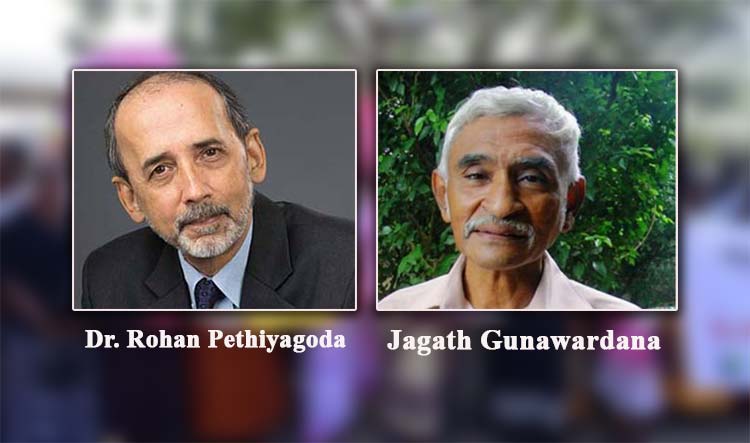
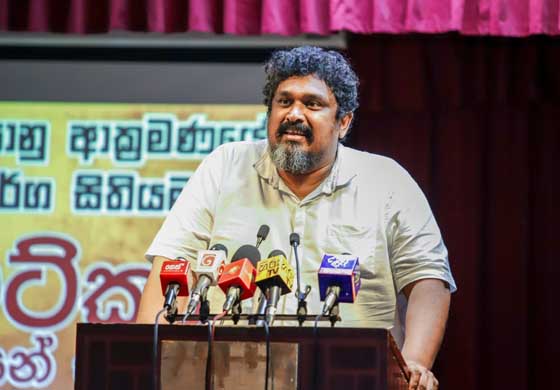 ඉන්දියාව වැනි ආරක්ෂකවාදී රටක් සමග වෙළෙඳ ගිවිසුම් අත්සන් කළද, එම ගමන සාර්ථක ලෙස යා නොහැකි බවත්, එට්කා යනු සාමාන්ය වෙළෙඳ ගිවිසුමක් නොවන බවත් වෘත්තිකයන්ගේ ජාතික පෙරමුණේ සභාපති ඉංජිනේරු කපිල පෙරේරා මහතා පවසයි.
ඉන්දියාව වැනි ආරක්ෂකවාදී රටක් සමග වෙළෙඳ ගිවිසුම් අත්සන් කළද, එම ගමන සාර්ථක ලෙස යා නොහැකි බවත්, එට්කා යනු සාමාන්ය වෙළෙඳ ගිවිසුමක් නොවන බවත් වෘත්තිකයන්ගේ ජාතික පෙරමුණේ සභාපති ඉංජිනේරු කපිල පෙරේරා මහතා පවසයි.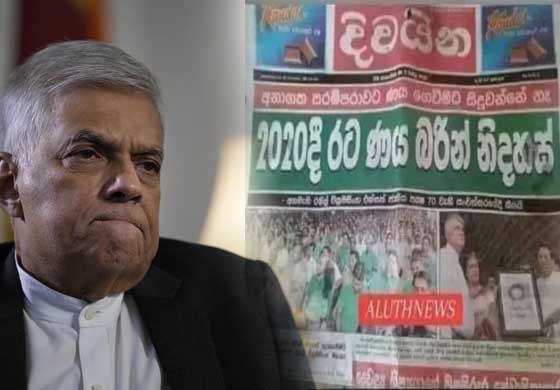 ලංකා ලීඩර් පාඨකයකු එවා ඇති 2016 දී පළ වූ පුවත්පත් සිරස්තලයක සඳහන් වන්නේ එදා අගමැති රනිල් වික්රමසිංහගේ ප්රකාශයකි.
ලංකා ලීඩර් පාඨකයකු එවා ඇති 2016 දී පළ වූ පුවත්පත් සිරස්තලයක සඳහන් වන්නේ එදා අගමැති රනිල් වික්රමසිංහගේ ප්රකාශයකි.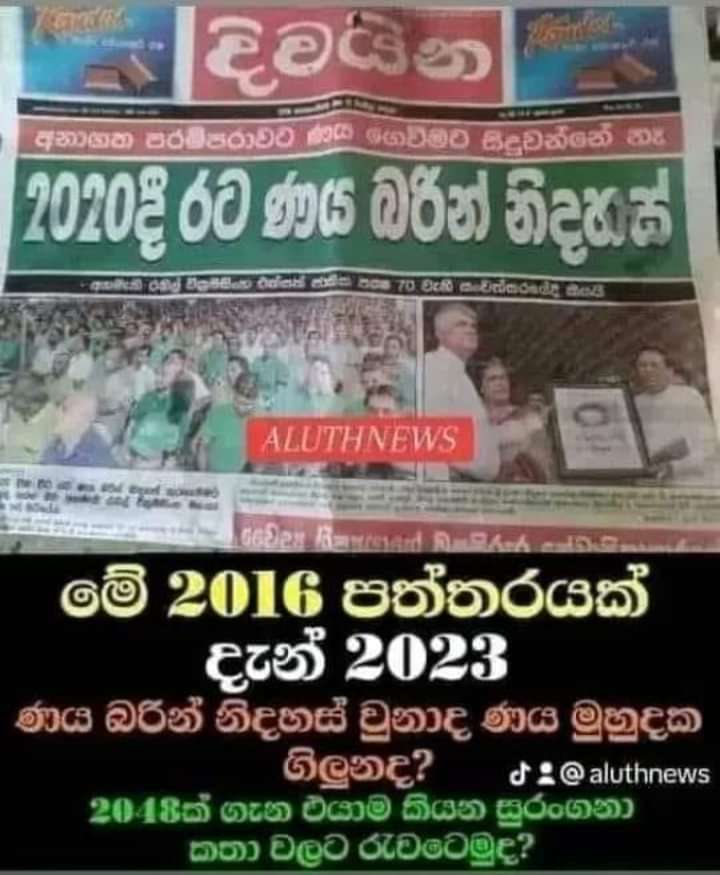
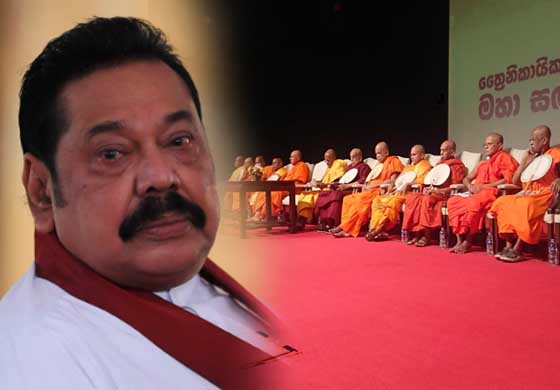 හිටපු ජනාධිපති මහින්ද රාජපක්ෂ මහතා ප්රමුඛ ශ්රී ලංකා පොදුජන පෙරමුණ ඇතුළු ආණ්ඩුවට සම්බන්ධ ජනතා නියෝජිතයන්ට සංඝ ආඥාවක් නිකුත් කර තිබේ.
හිටපු ජනාධිපති මහින්ද රාජපක්ෂ මහතා ප්රමුඛ ශ්රී ලංකා පොදුජන පෙරමුණ ඇතුළු ආණ්ඩුවට සම්බන්ධ ජනතා නියෝජිතයන්ට සංඝ ආඥාවක් නිකුත් කර තිබේ.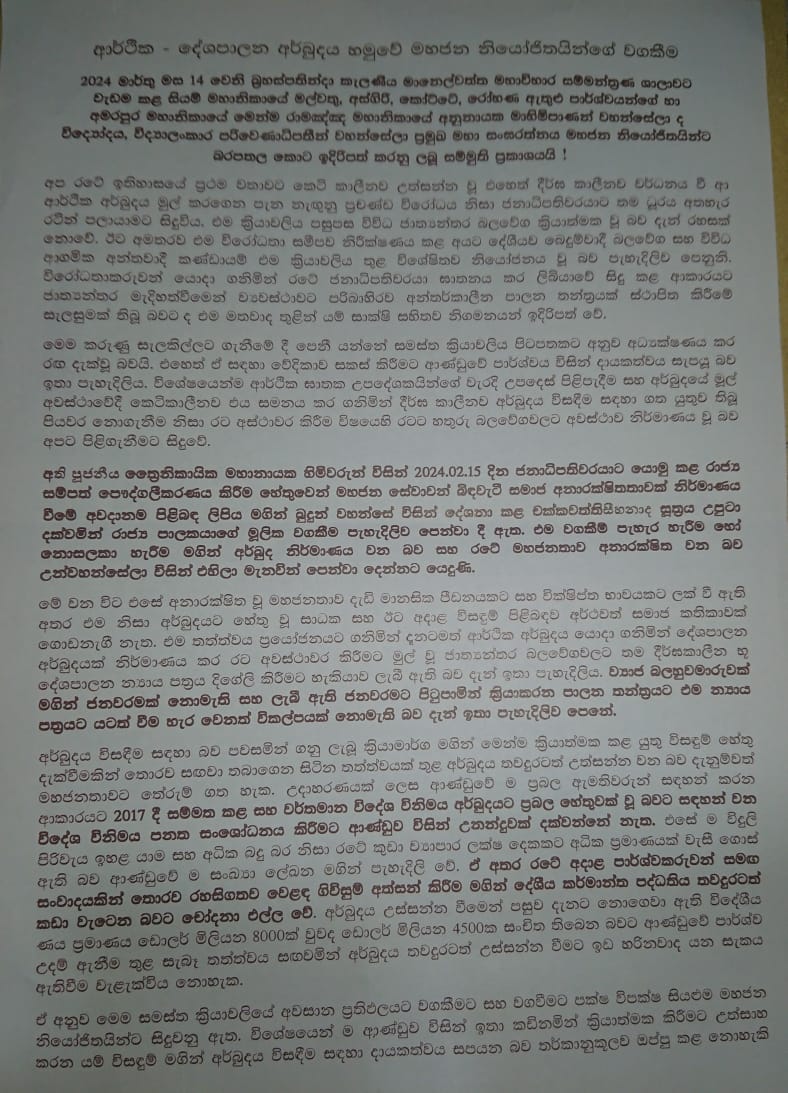
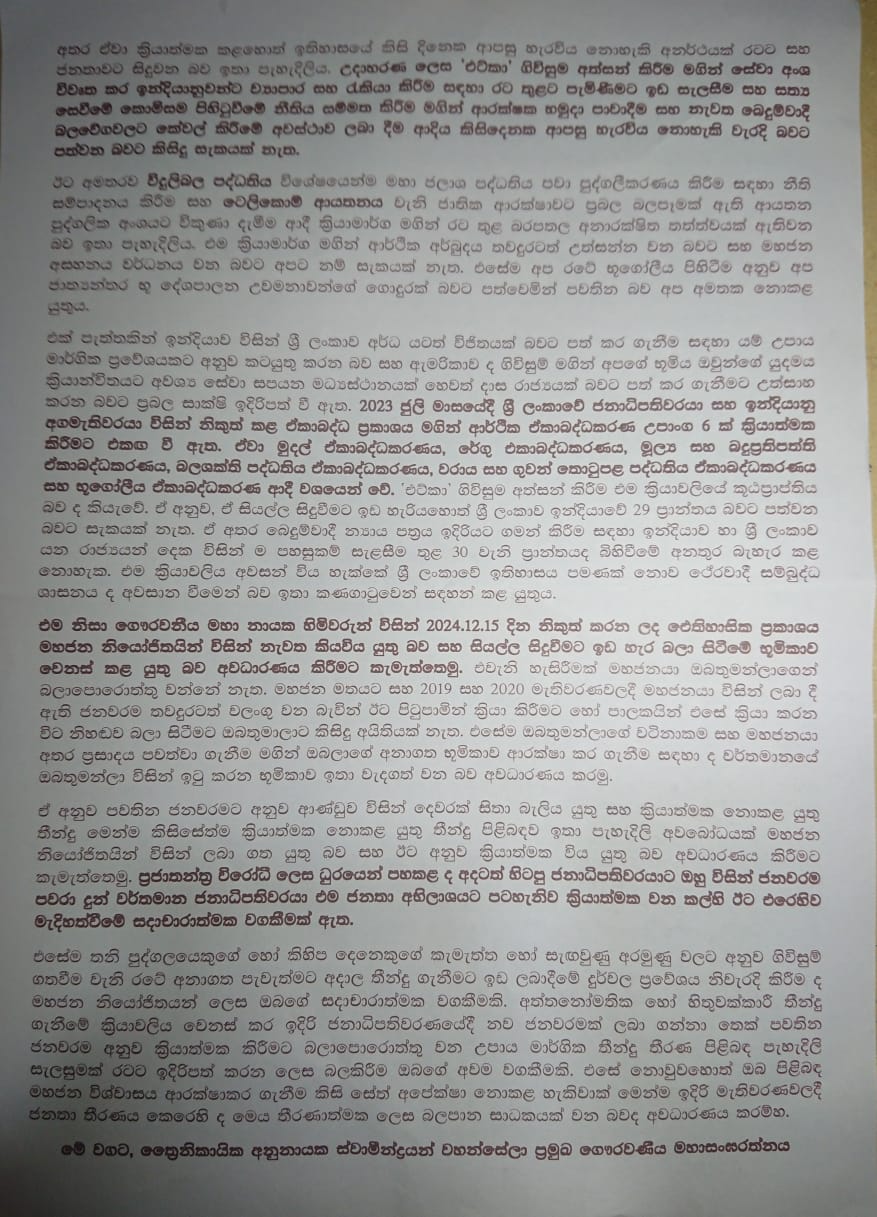
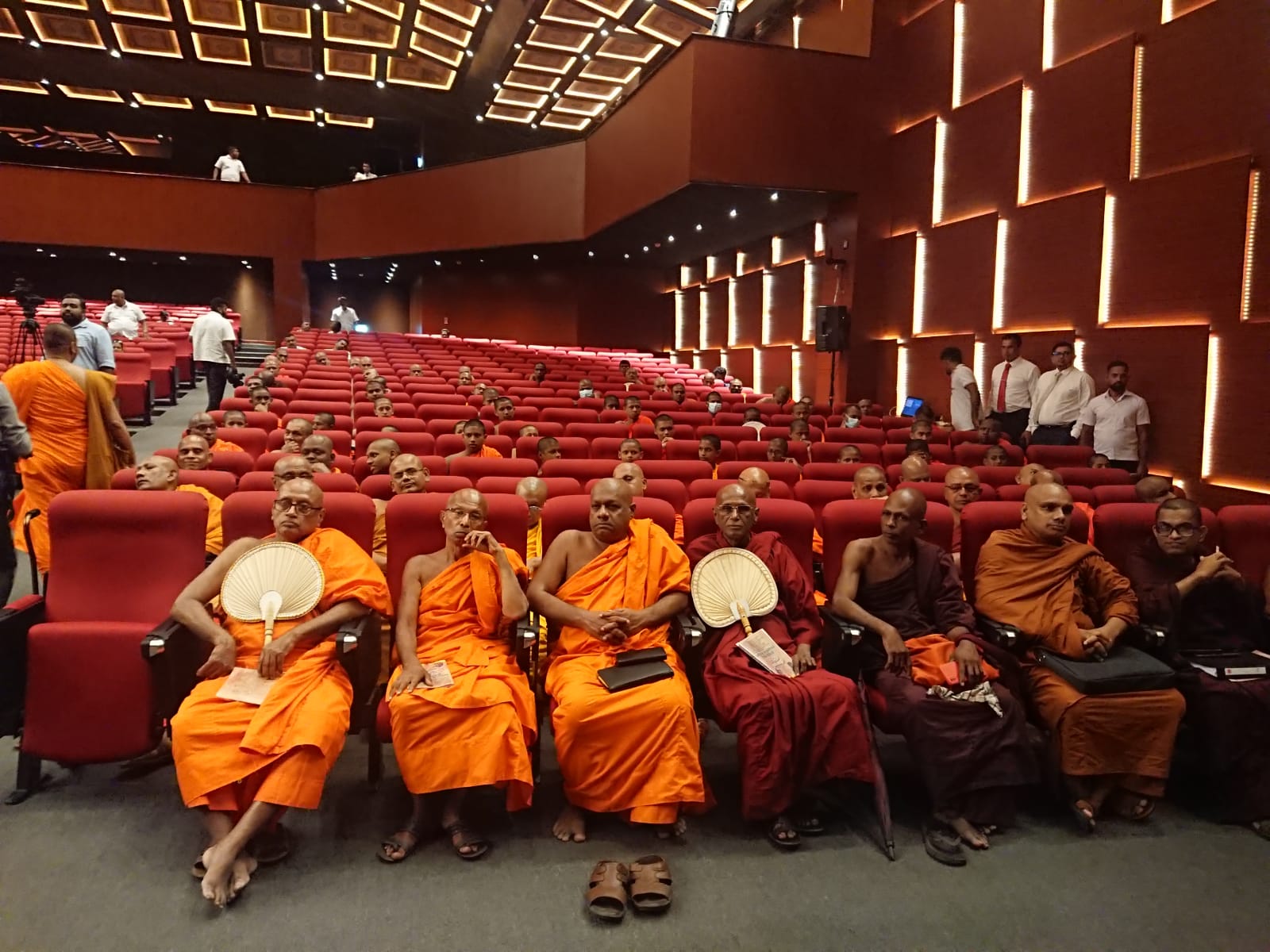
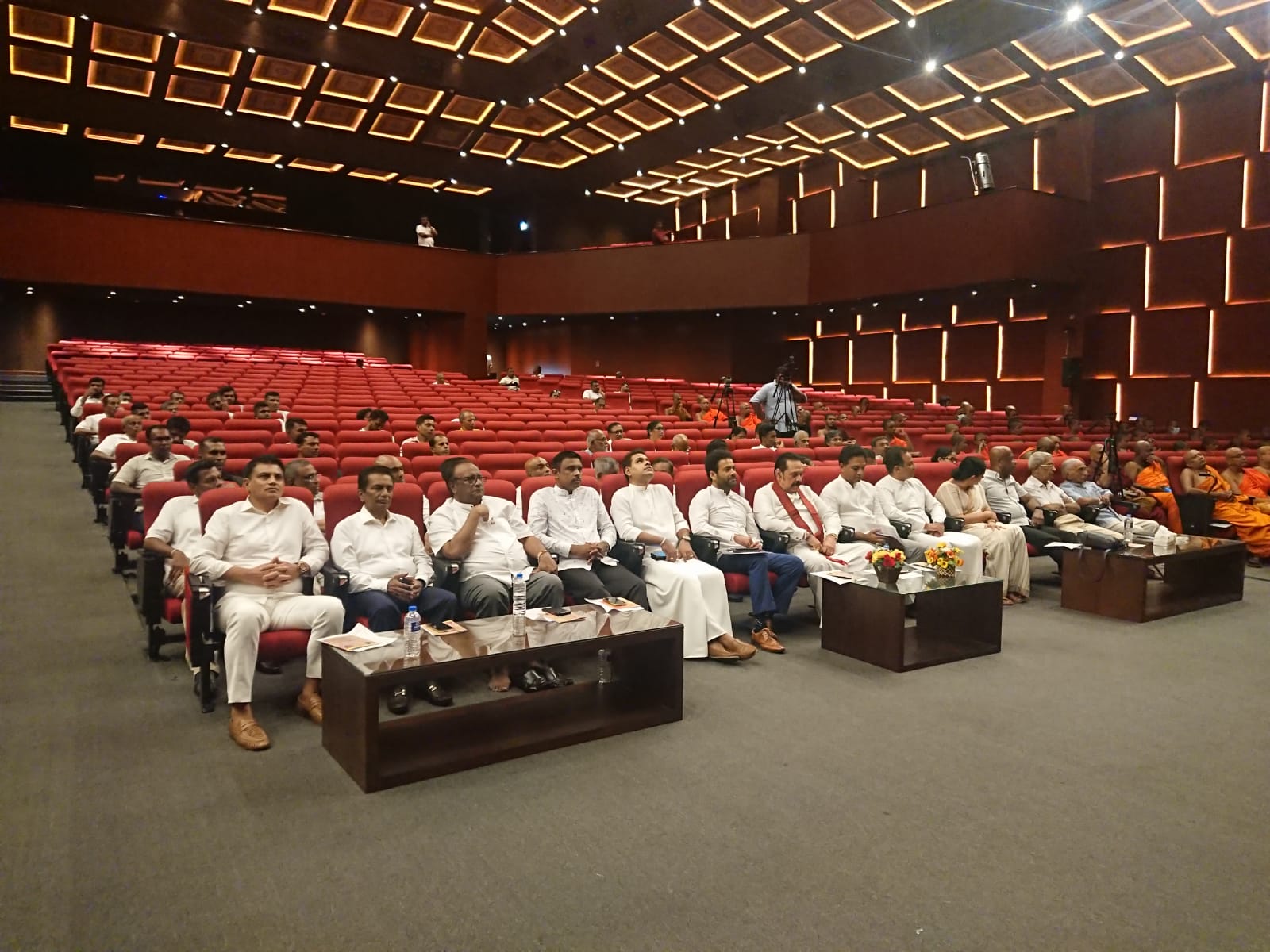
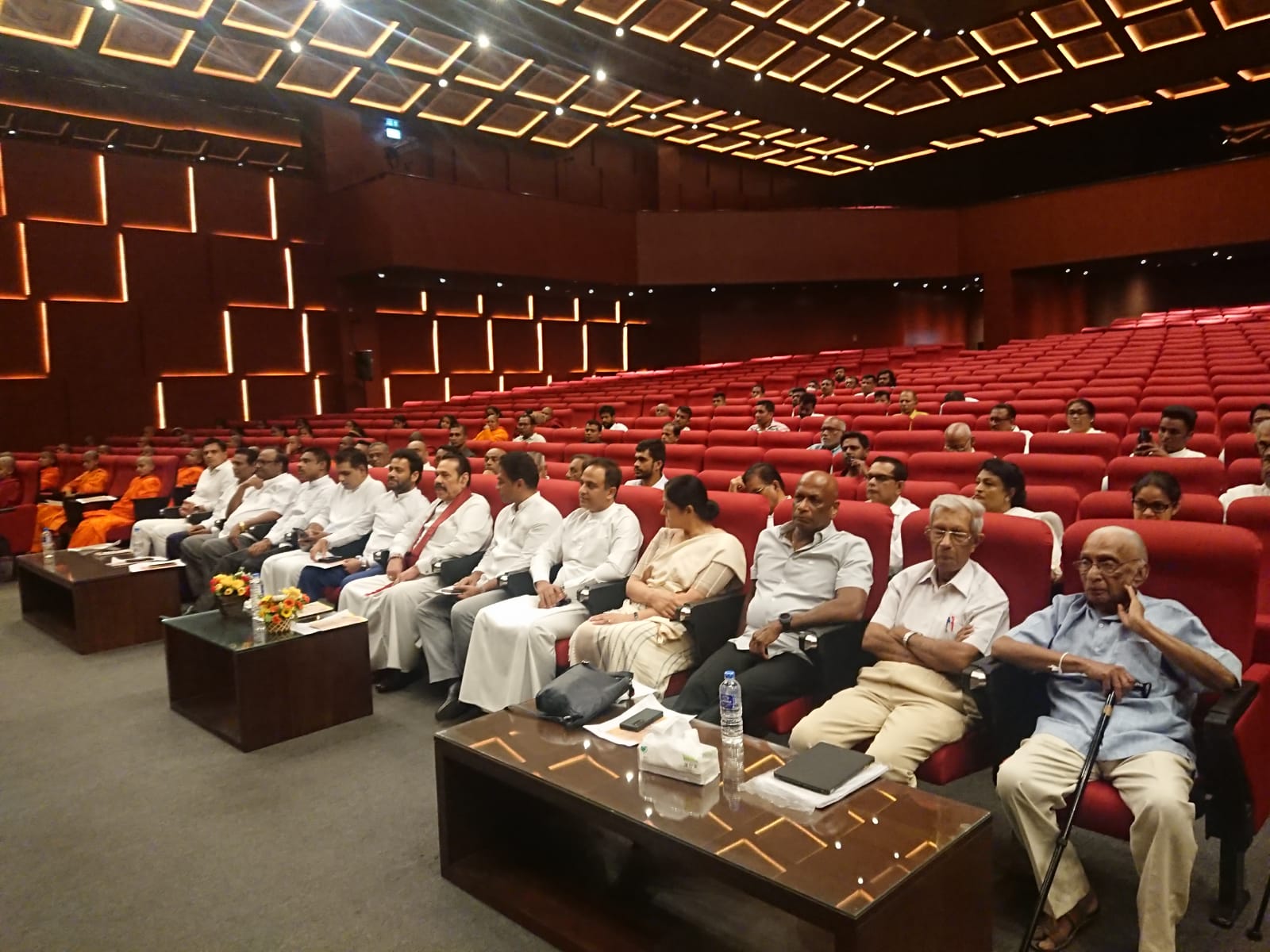
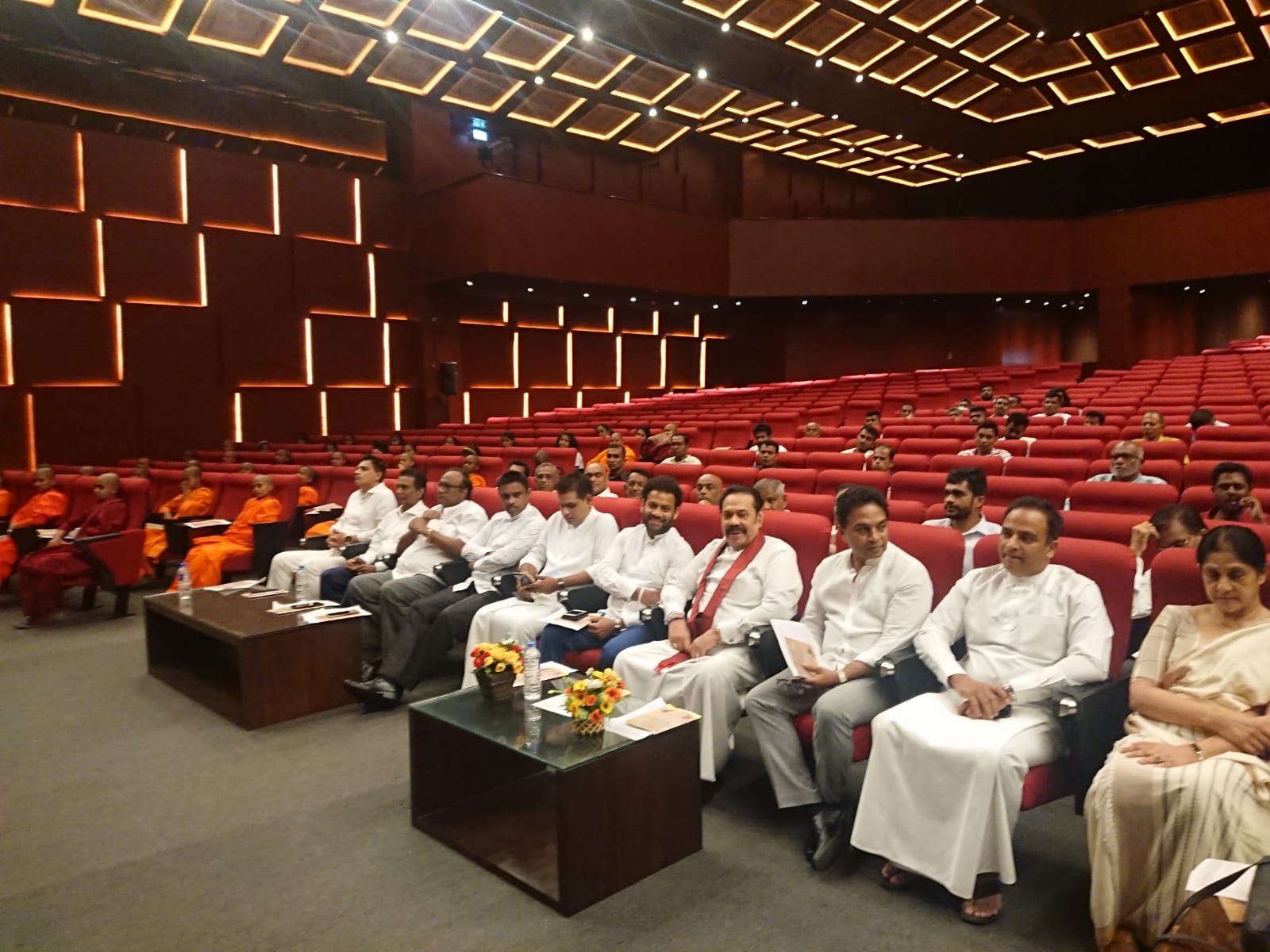
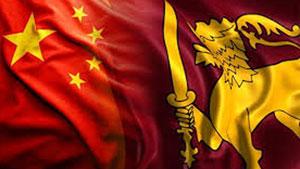 Sri Lanka has refuted recent claims from US intelligence that there are potential plans for a Chinese military base to be established on its soil.
Sri Lanka has refuted recent claims from US intelligence that there are potential plans for a Chinese military base to be established on its soil.

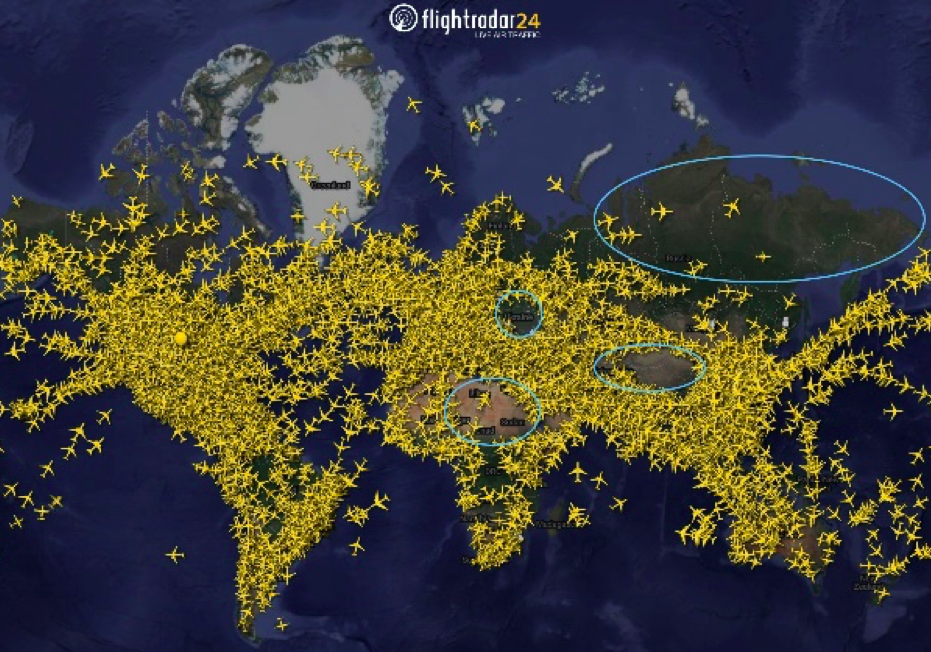
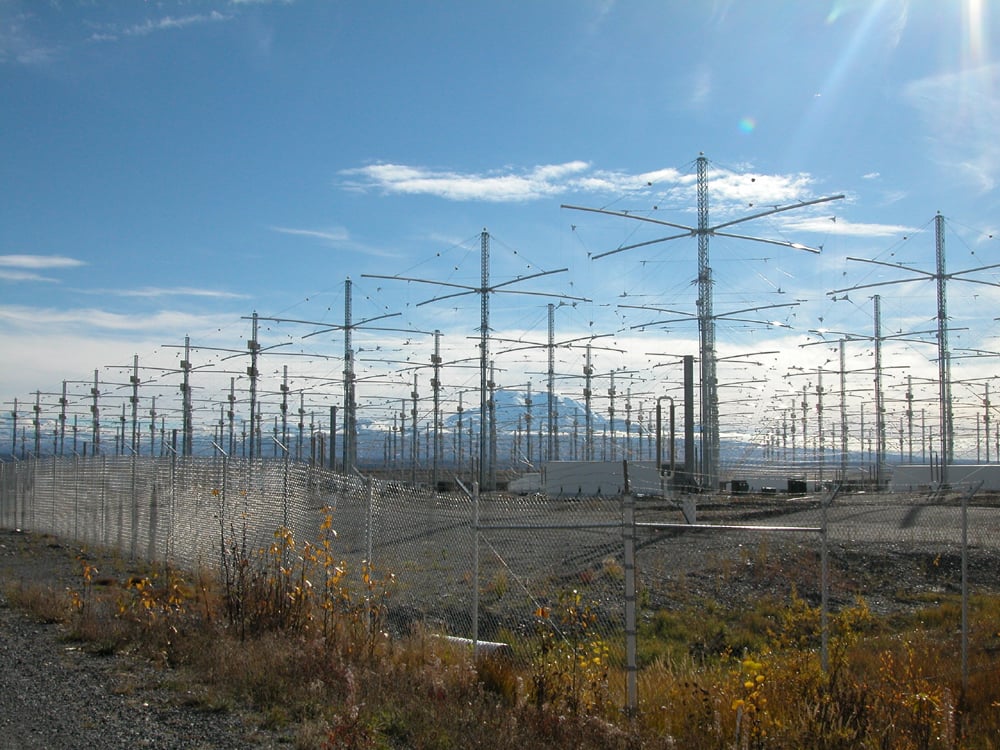
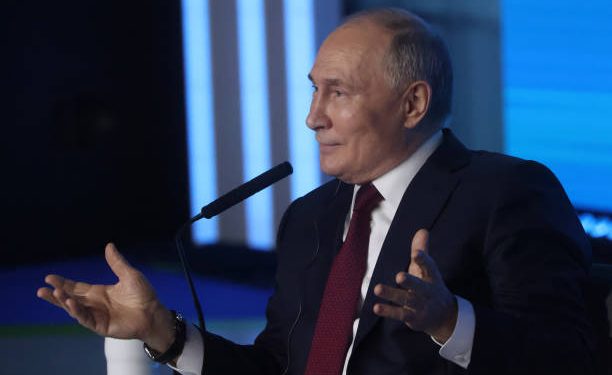
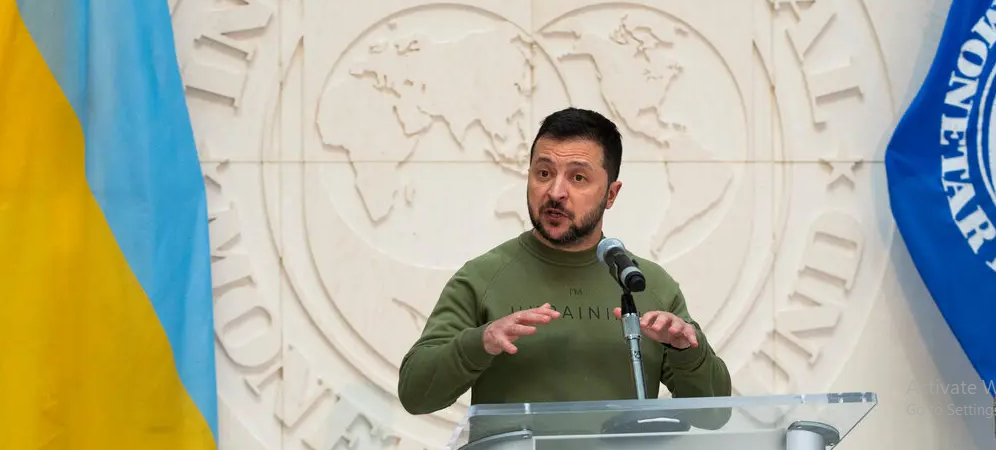

 Archaeologists carrying out excavations in the historic Polonnaruwa city have found evidence of a civilization that dates back to a period before the Polonnaruwa period recorded in history.
Archaeologists carrying out excavations in the historic Polonnaruwa city have found evidence of a civilization that dates back to a period before the Polonnaruwa period recorded in history.
